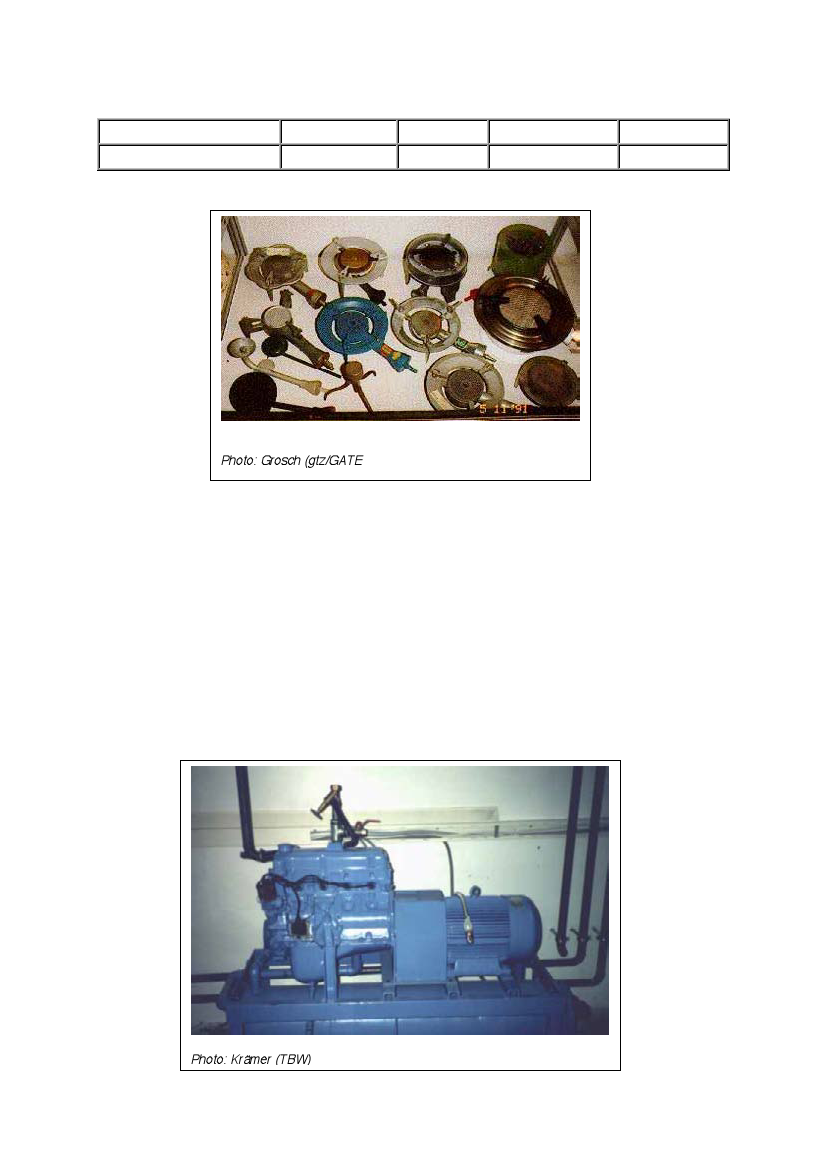
profitably. The use of biogas in stoves is the best way of exploiting biogas energy for farm
households in developing countries.
appliances
gas lamps
engines gas stoves
power-heat
efficiency [%]
3
24 55
88
Figure 46: Different types of Biogas burners at an
agricultural exhibition in Beijing/China
Photo: Grosch (gtz/GATE
For the utilization of biogas, the following consumption rates in liters per hour (l/h) can be
assumed:
• household burners: 200-450 l/h
• industrial burners: 1000-3000 l/h
• refrigerator (100 l) depending on outside temperature: 30-75 l/h
• gas lamp, equiv. to 60 W bulb: 120-150 l/h
• biogas / diesel engine per bhp: 420 l/h
• generation of 1 kWh of electricity with biogas/diesel mixture: 700 l/h
• plastics molding press (15 g, 100 units) with biogas/diesel mixture: 140 l/h
Biogas can also be used for various other energy requirements in the project region.
Refrigerators and chicken heaters are the most common applications. In some cases biogas
is also used for roasting coffee, baking bread or sterilizing instruments.
Figure 47: Co-generation unit (electricity and heat utilisation)
Photo: Krämer (TBW)
78